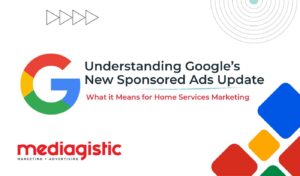
Media Buying Secrets: 7 things the media (or your agency) will never tell you…
Smarter media buying will help you get more for your advertising time. But how do you know if you’re getting the best value for the lowest price?
Since advertising and marketing dollars are usually a substantial, and necessary, part of any business’ budget, you need to understand what to look for when buying TV, radio, billboards, or other mass media. Yet most companies (and agencies) don’t know how to effectively buy media and usually pay the rate card prices.
Why isn’t more mass media purchased at discount? Here are the 3 top reasons:
- Pride gets in the way.
Everyone wants to think they have made a great media deal, sometimes because their media rep told them they drive a hard bargain. Who wants to admit that they made just a so-so deal, that the rep took advantage of them, or that they really made the buy because they wanted the free football or concert tickets? What you save in media dollars will allow you to buy your own tickets and then some! - Knowing a little about media is dangerous.
Knowing a little bit about buying media is like reading about architecture. You can certainly get the idea from reading a book, but you probably couldn’t successfully build a bridge afterwards. Not fully understanding media gross rating points, reach, and frequency — or the target cost-per-points and cost per thousands of targeted consumers — are examples of how trying to buy media without this expertise. All it does is allow the media reps and outlets to take advantage of you. - Most Advertising agencies have a disincentive to save a company money.
Why? Because most agencies are compensated on a percentage (usually 12-15%) of the total media purchase. If the agency negotiates the price of the media, they earn less revenue. For example:
$10,000 Television Buy x 15% agency commission = $1,500.
If the agency negotiates the media cost down to $7,500:
$7,500 Television Buy x 15% agency commission = $1,125.
$2,500 Savings to you.
Loss of revenue to agency = $375
And the agency has to work a whole lot harder to make less money! Who loses? You do!
Media buying is a little like the movie, The Wizard of Oz. The Wizard never wanted you to look behind the curtain because he didn’t want you to find out what was really back there – a small man pulling a bunch of levers!
We’re going to share some of the secrets learned in more 25 years of media buying, and give you a peek behind the curtain.
Media Secret #1:
Everything is negotiable.
Every media buy is negotiable. No matter what the rep tells you:
- Media is never sold out.
- Media outlets always have some available inventory.
- Media sales are not so good that the reps have quit calling on customers.
For these reasons, you can always negotiate better rates, schedules and times.
Media Secret #2:
It’s all about supply and demand.
This classic economic theory directly applies to media buying. If there is strong demand in a market for one station, or one-day part (like Morning Drive), then it will be harder to negotiate the pricing. It’s not impossible – just a little harder. The same is true during an election year or an Olympic year.
When there is more advertising being bought, the stations feel secure, and it may be more difficult to negotiate. But when the top 2 or 3 “fat” radio stations in the market aren’t as flexible on their rates, there are twenty or so who have more inventory. Available inventory equals greater discounts. And if you understand the way to effectively buy your TV, radio, cable, billboards, etc., you can plan your buys to reach your target audience and your budget.
Media Secret #3:
Value added bonuses aren’t usually a value.
Most agencies don’t know how to negotiate media. They hire inexperienced media staffers, straight out of college, to negotiate with the media outlets on behalf of their clients.
Typically, the agency reps ask the stations for either: a.) a rate card, or b.) pricing for a schedule that the customer has requested.
There’s very little, if any, negotiating done on the schedule. But just so the agency feels like they “earned” their commission, and have secured a “win” for the client, they press the station for “value-added bonuses.” If your rep or agency makes a bigger deal about valued-added bonuses instead of the value of the media schedule, it is best to act as Katniss from the Hunger Games: “Panic begins to set in. Flight is essential. But I can’t let my fear show.”
Media Secret #4:
Buy ratings, not programs.
A lot of media money is wasted because clients use their own biases in making media choices. Unfortunately, most agencies aren’t smart or brave enough to stop them. If the client primarily watches sports channels on cable, then he thinks his ads needs to be there too, even though there may be a far better deal (in terms of greater viewership or lower cost) somewhere else.
Prime time television is one of the most expensive cost-per-point buys on television. Why? Because it’s easy for the agencies to buy and it’s where the clients think they want to be: “Did you see my ad on America’s Got Talent?” Remember, from Secret #2, the highest rated shows quickly become the most expensive shows because of supply and demand.
Bonus Secret:
If your ad size or media weight is not sufficient enough to reach your target audience, don’t advertise.
Would you take a hundred dollar bill out of your pocket and throw it out the window? You might as well be doing that if your media weight, (especially the ad frequency), is insufficient to reach the audience. We like to call small cable buys, (e.g. 1-3 spots per week for 20 weeks), “black hole” buys. If anyone sees these ads and responds to them, it’s a miracle. But most people who run these ads say: “The rates were so high, it was all I could afford.” Or, “If I didn’t run the ad, I would lose the co-op funds from the manufacturer.” With more than 20,000 advertisements bombarding a person every day, anything less than 3-5 times per week per station on the Cable networks, will just go into the black hole.
Remember these points when you are either negotiating yourself, or interviewing an agency to buy on your behalf. When the schedule effectively balances the number of gross rating points, frequency, and targeted consumer reach, to meet the standards of your industry, you will be sure to have an effective media schedule and the best value for your money.
Need a professional media planner to go head to head with the reps and negotiate on your behalf? Check out Mediagistic’s media planning and buying services today.
*Originally published in July 2014, updated September 2016
Wizard of OZ and Katniss photos via Flickr by twm1340 and BagoGames. Featured image via Thinkstock
You May Also Like

Google’s “Have AI Get Prices” Feature: Rewriting Local Search for HVAC & Home Services
December 15, 2025In recent months, Google has quietly rolled out a major update to local search with its new “Have AI Get Prices” functionality,… Continue Reading Google’s “Have AI Get Prices” Feature: Rewriting Local Search for HVAC & Home Services…

Mediagistic Announces Strategic Partnership with EGIA to Deliver Enhanced Marketing Solutions for Home Services Contractors
November 10, 2025Tampa, FL – Mediagistic, a full-service marketing and advertising agency specializing in contractors and service-based businesses, today announced a strategic partnership with… Continue Reading Mediagistic Announces Strategic Partnership with EGIA to Deliver Enhanced Marketing Solutions for Home Services Contractors…

Understanding Google’s Sponsored Results Update: What it Means for Home Services Marketing
October 20, 2025Google is once again reshaping how paid ads appear in search results, and this change (called the Google Sponsored Results Update) could… Continue Reading Understanding Google’s Sponsored Results Update: What it Means for Home Services Marketing…